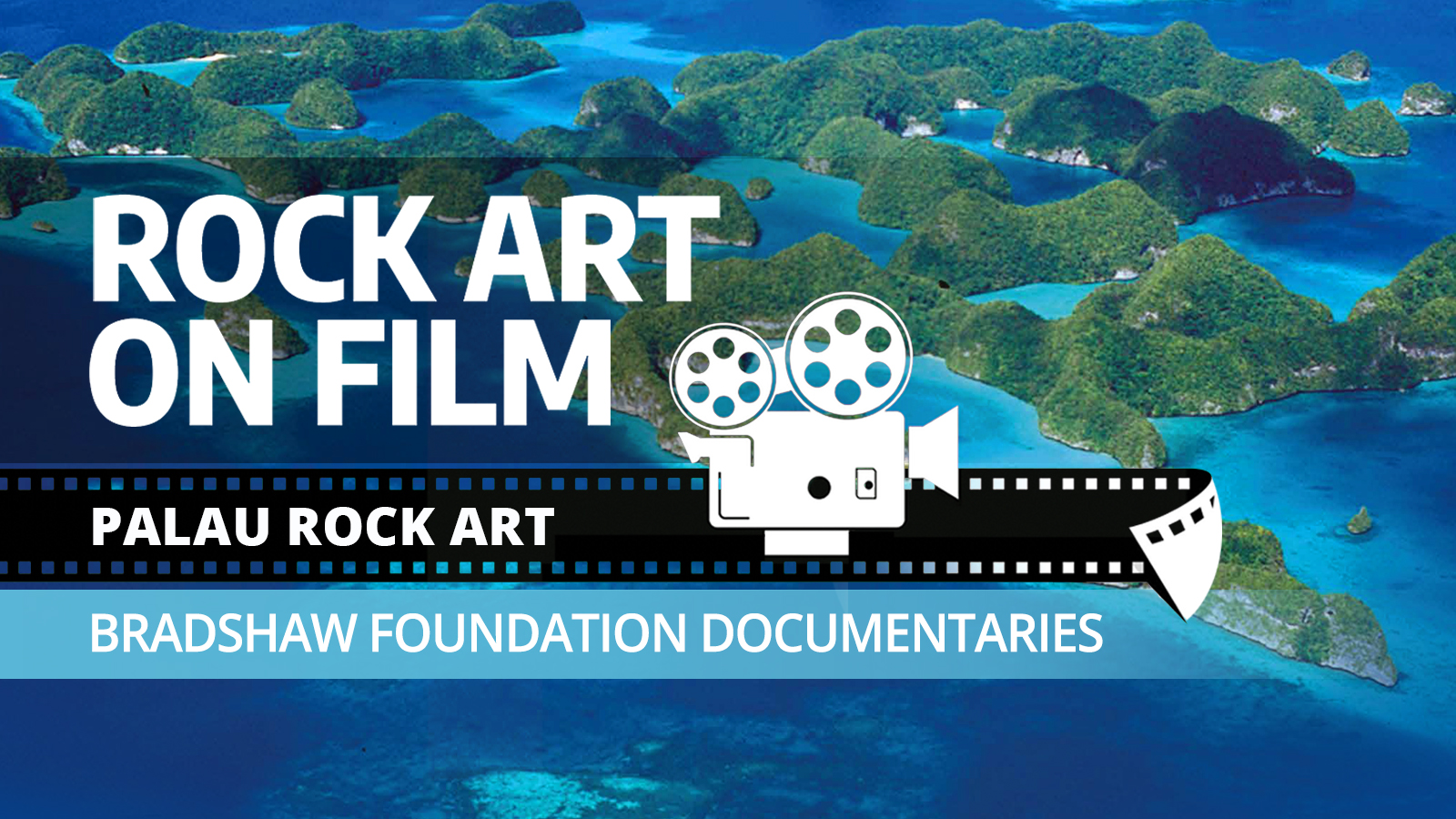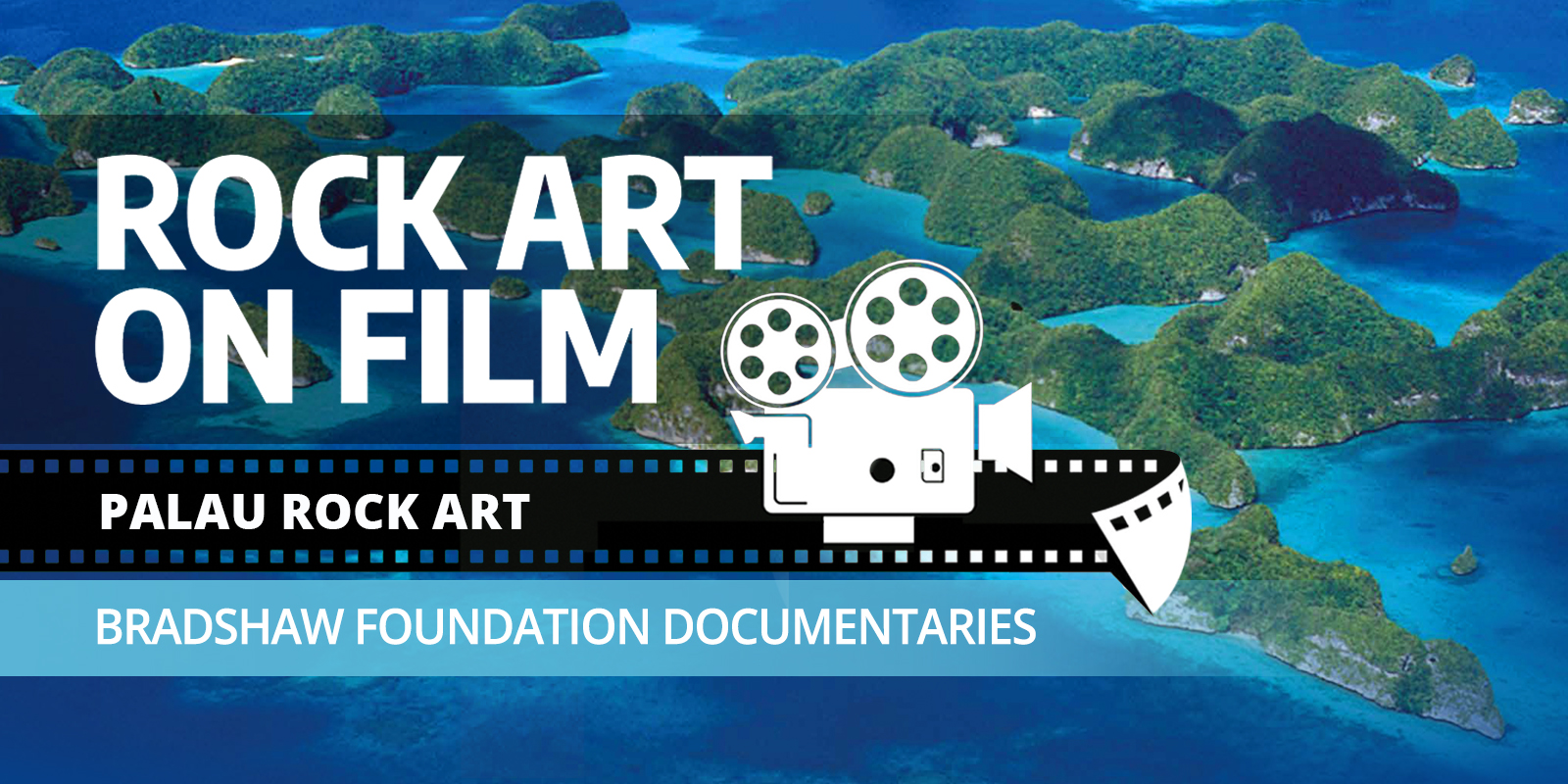





The roughly 480 coral and volcanic islands comprising the archipelago of Palau cover 466 square kilometers in the remote western Pacific Ocean. These tropical isles contain bountiful and storied land, sea, and skyscapes which roughly 18,000 people call home. Palau’s vibrant ancestral heritage and cultural traditions span 3,400 years of human settlement and habitation and remain strong to this day.
Palau’s rock art consists of a few inland engravings and at least 150 reddish-colored rock paintings on coastal cliff faces at ten locations within the chelebacheb, the hundreds of small, coralline limestone islands known locally as the Rock Islands. Six of Palau’s known rock painting sites are features of The Rock Islands Southern Lagoon, a mixed natural and cultural UNESCO World Heritage site.
The currently uninhabited Rock Islands occupy a turquoise lagoon surrounded by a coral reef. This natural paradise sustains a diversity of native plants, birds, and marine life, and has the highest concentration of marine lakes in the world. Rock art as well as traditional villages and ancient agricultural, activity, and burial sites, are found throughout the World Heritage site. Palau’s ancient rock carvings and paintings are embedded in a richly storied cultural landscape where oral traditions are deeply valued by communities, youth and elders, throughout the archipelago. Within this context, Palau’s rock art represents ancestral knowledge, a symbolic language from long ago, and a unique cultural treasure.
It is free to subscribe to the Bradshaw Foundation YouTube channel. By subscribing and turning on notifications, you will be notified when we release films on rock art and cave paintings. More films from the Bradshaw Foundation are available to watch below.